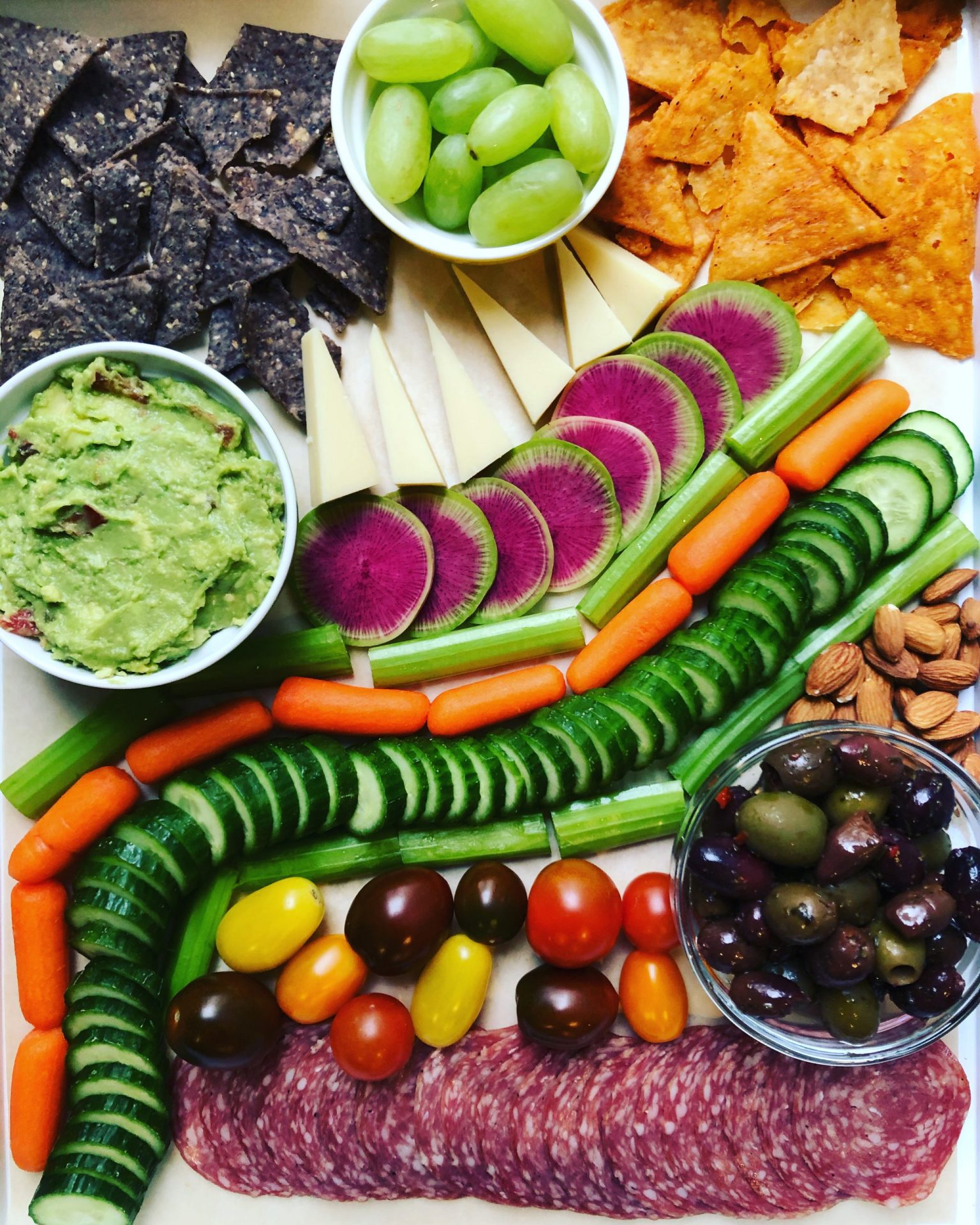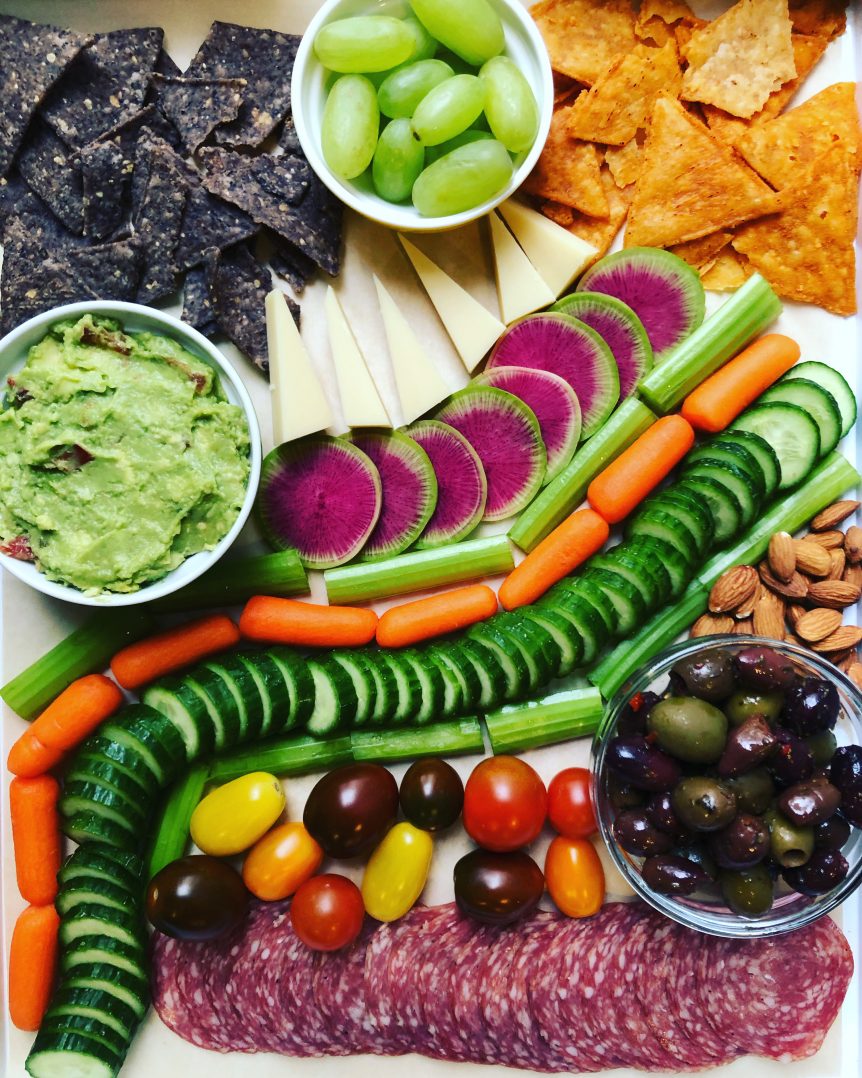
Most of us have been cooped up for more than a month now. Along with complaints about home schooling our kids while working from home, the second biggest everyday issue people are buzzing about is how much snacking they’re doing. And that extra snacking might lead to what some are calling, “The Quarantine Fifteen” or the “COVID 19.”
Whether it’s due to anxiety, boredom or just because we’ve all stocked up on more food than we can properly store in the cupboards—we’re eating a heck of a lot more. Most parents aren’t used to preparing 3 meals, plus 2 to 3 snacks each day during the work week, and all the extra food prep may be adding to our waistlines too. Another reason we’re snacking more is that with no set routines, we’re eating whenever we want to. Either way, you’re looking for solutions to the problem, and I’m here to help!
SNACKING GUIDELINES
- If possible, keep snacks off the counters: You know the old chestnut, “Out of sight, out of mind.” It’s true. If there’s a container full of brownies on the counter, guess what people are going to flock to. It’s not that you can’t enjoy a delicious brownie, but you don’t need to be grabbing one each time you walk through the kitchen. So keep the really enticing things, like chocolate, baked goods, chips, etc. in cupboards or in the fridge. Having to pause a second before grabbing one might be all you need to keep the munchies in check.
- Always use a bowl or plate: We’ve all done it. Grabbed a bag of tortilla chips or a sleeve of cookies and started snacking, just to look down and discover that (shocker!) you’ve inhaled half of it. It’s a much better idea to put the food on a plate or in a bowl. That way you can actually see how much you’re eating and watch the food disappear.
- Be mindful: Whenever possible, sit down to enjoy your snack and avoid doing other things while you’re eating. It’s amazing how quickly those slices of cheese and crackers disappear while you’re venting to your sister on the phone, and you may not have even registered how delicious the cheese was because you were so distracted. Before grabbing something to eat, ask yourself whether you’re actually hungry, or possibly thirsty, tired or bored. It’s fine to have a snack to perk up your energy levels, just be sure you’re making a mindful choice.
- Keep the fruits and veggies front and center: Remember tip #1? What works for those brownies can also work for fruits and veggies. If you make healthy produce accessible and easy, you’re more likely to eat it. Keep a bowl of fruit on the counter and you and your family will be more likely to snack on it. For vegetables, go with “easy veggies” that don’t require any prep, like cherry tomatoes, baby carrots, and mini bell peppers and keep them ready-to-go in clear containers in the fridge. Or take a little extra time in the morning or at night, and cut up cucumbers, trim sugar snap peas, and cut celery into bite-sized pieces. Cut veggies will last for 3 to 4 days when stored in an airtight container in the fridge (always wash them before prepping). When you or a family member is searching for a snack, you’ll have something crunchy and healthy ready to go! Another great thing to have on hand is overnight oats. Try this Tie Dye ONO, which uses frozen fruit.
- Consume media, not extra calories: These days the term “binge watching” has taken on a new meaning. We’re watching a ton more content (thank you Netflix, HBO and Hulu!), but we’re also snacking our way through whole series. It’s fine to enjoy a snack while you’re watching your favorite show, but keep in mind that you will likely eat the entire bowl/bag/plate of anything in front of you—we’re just programmed that way. So use that mindless eating to your advantage and fill a small bowl with baby carrots, cucumber slices, jicama sticks or grapes. There’s no need to feel guilty about getting your fruits and veggies! For more help keeping track of your water and fruit and veggie intake, check out my Healthy Habit Tracker.
- Stick to a schedule: With no commute and no school drop off, we don’t have the usual bookends on our days. This one is especially tough for me because I’m used to having my own time (to eat, work, exercise, etc.) during the day once I’ve dropped the kids off. For the first few weeks of quarantine, we slept in and stayed up later than usual. It was OK for a while, but I noticed that we were having breakfast really late, sometimes skipping lunch, and then snacking heavily in the afternoon. Again, not a total disaster, but not something I wanted to make a habit out of, so my husband and I worked to get everyone back on track with the schedule, and that has helped normalize our eating. It’s healthy to be flexible right now, but kids—and adults—thrive on a routine.
What size is a snack?
Great question! I usually advise clients to stick to a snack that is about 150 to 250 calories. The higher end is ideal for post workout. A snack should be satisfying, but shouldn’t be so filling that you’re not hungry for mealtime. Balanced, filling snacks contain a combination of carbs, fiber, protein and healthy fats. An example would be an apple plus 2 tablespoons of almond butter or an ounce of manchego cheese plus an orange.
Here are examples of serving sizes. You can mix and match things to come up with a 200 calorie snack. For example, 3.5 cups of microwave popcorn, plus 1/2 an ounce of pistachios. Snack on!
- Cheese: 1 ounce
127 calories, 11g fat, 0g fiber, 7g protein, 300mg calcium
- Fruit: 1 medium piece (such as an apple, pear, orange or banana)
Or 1/2 cup diced fresh, frozen, or canned fruit, such as pineapple, mango, or berries
Or ¼ cup dried fruit
(most fruit is about 100 calories per serving, but it varies)
- Nuts: 1 ounce
This breaks down to:
49 pistachios = 150 calories
15 pecans = 196 calories
35 peanuts = 160 peanuts
14 walnuts = 190 calories
23 almonds = 160 calories
18 cashews = 160 calories
- 1 cup (12 to 13) baby carrots = 45 calories, 3g fiber, 352mg potassium, 9110 micrograms beta-carotene
+ 2 tablespoons hummus = 60 calories, 3g protein, 2g fiber, 170mg sodium
- Microwave popcorn, butter flavor = 3.5 cups popped
160 calories, 2g protein, 10g fat (varies by brand), 3g fiber
- Dark chocolate (this will vary based on the percentage of cacao or cocoa) = 1 ounce
160 calories, 11g fat, 15g carbs, 2g protein, 2g fiber
- 1 oz (10 chips) multigrain tortilla chips = 140 calories, 7g fat, 2g fiber, 2g protein
+ 2 tablespoons guacamole = 45 calories, 4g fat, 2g fiber, 1g protein

